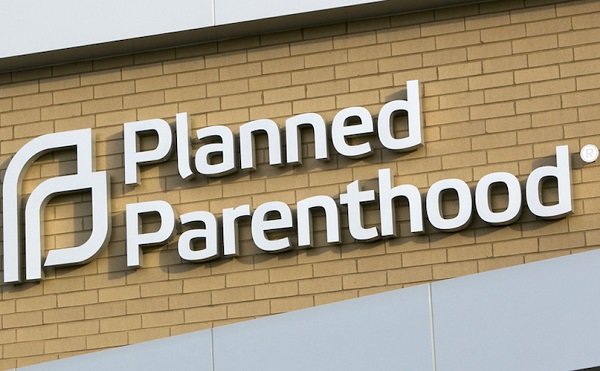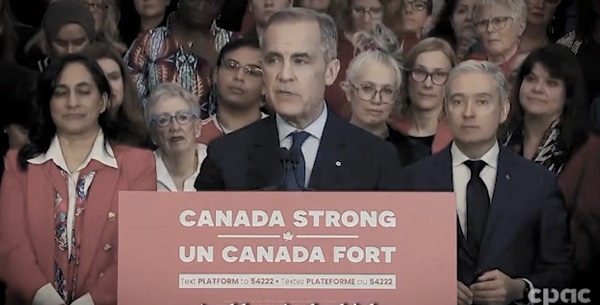Business
Trump’s government efficiency department plans to cut $500 Billion in unauthorized expenditures, including funding for Planned Parenthood

From LifeSiteNews
Elon Musk and Vivek Ramaswamy shared their plans to ‘take aim’ at ‘500 billion plus’ in federal expenses, including ‘nearly $300 million’ to ‘progressive groups like Planned Parenthood.’
Elon Musk and Vivek Ramaswamy are planning to ax taxpayer funding for Planned Parenthood as part of their forthcoming work for the next Trump administration, they revealed in a Wednesday op-ed in The Wall Street Journal.
The businessmen have been appointed by President Donald Trump to lead a new Department of Government Efficiency (DOGE), which will work from outside the official government structure to cut wasteful government spending and excess regulations, as well as “restructure federal agencies,” as Trump announced last week on Truth Social.
Musk and Ramaswamy shared Wednesday that as part of their work at DOGE to downsize government spending, they will be “taking aim at the $500 billion plus in annual federal expenditures that are unauthorized by Congress or being used in ways that Congress never intended,” thereby “delivering cost savings for taxpayers.”
They specifically called out Planned Parenthood as one institution that will lose taxpayer funding once DOGE kicks into gear. In their op-ed, the duo said the federal expenditures they plan on cutting includes the “nearly $300 million” dedicated “to progressive groups like Planned Parenthood.”
Musk and Ramaswamy also reportedly will take aim at the “$535 million a year to the Corporation for Public Broadcasting and $1.5 billion for grants to international organizations,” according to Catholic Vote, although they have not shared all of the federal spending they plan to cut or reduce.
“With a decisive electoral mandate and a 6-3 conservative majority on the Supreme Court, DOGE has a historic opportunity for structural reductions in the federal government,” the business duo wrote. “We are prepared for the onslaught from entrenched interests in Washington. We expect to prevail.”
Mogul and X owner Musk, who was outspoken before his DOGE appointment about the big problem of waste, noted last week that if the government is not made efficient, the country will go “bankrupt.”
He reposted a clip from a recent talk he gave in which he explained that not only is our defense budget “pretty gigantic” — a trillion dollars —but the interest the U.S. now owes on its debt is higher than this.
“This is not sustainable. That’s why we need the Department of Government Efficiency,” Musk said.
2025 Federal Election
POLL: Canadians want spending cuts

 By Gage Haubrich
By Gage Haubrich
The Canadian Taxpayers Federation released Leger polling showing Canadians want the federal government to cut spending and shrink the size and cost of the bureaucracy.
“The poll shows most Canadians want the federal government to cut spending,” said Gage Haubrich, CTF Prairie Director. “Canadians know they pay too much tax because the government wastes too much money.”
Between 2019 and 2024, federal government spending increased 26 per cent even after accounting for inflation. Leger asked Canadians what they think should happen to federal government spending in the next five years. Results of the poll show:
- 43 per cent say reduce spending
- 20 per cent say increase spending
- 16 per cent say maintain spending
- 20 per cent don’t know
The federal government added 108,000 bureaucrats and increased the cost of the bureaucracy 73 per cent since 2016. Leger asked Canadians what they think should happen to the size and cost of the federal bureaucracy. Results of the poll show:
- 53 per cent say reduce
- 24 per cent say maintain
- 4 per cent say increase
- 19 per cent don’t know
Liberal Leader Mark Carney promised to “balance the operating budget in three years.” Leger asked Canadians if they believed Carney’s promise to balance the budget. Results of the poll show:
- 58 per cent are skeptical
- 32 per cent are confident
- 10 per cent don’t know
“Any politician that wants to fix the budget and cut taxes will need to shrink the size and cost of Ottawa’s bloated bureaucracy,” Haubrich said. “The polls show Canadians want to put the federal government on a diet and they won’t trust promises about balancing the budget unless politicians present credible plans.”
2025 Federal Election
Carney’s budget means more debt than Trudeau’s

The Canadian Taxpayers Federation is criticizing Liberal Party Leader Mark Carney’s budget plan for adding another $225 billion to the debt.
“Carney plans to borrow even more money than the Trudeau government planned to borrow,” said Franco Terrazzano, CTF Federal Director. “Carney claims he’s not like Trudeau and when it comes to the debt, here’s the truth: Carney’s plan is billions of dollars worse than Trudeau’s plan.”
Today, Carney released the Liberal Party’s “fiscal and costing plan.” Carney’s plan projects the debt to increase consistently.
Here is the breakdown of Carney’s annual budget deficits:
- 2025-26: $62 billion
- 2026-27: $60 billion
- 2027-28: $55 billion
- 2028-29: $48 billion
Over the next four years, Carney plans to add an extra $225 billion to the debt. For comparison, the Trudeau government planned on increasing the debt by $131 billion over those years, according to the most recent Fall Economic Statement.
Carney’s additional debt means he will waste an extra $5.6 billion on debt interest charges over the next four years. Debt interest charges already cost taxpayers $54 billion every year – more than $1 billion every week.
“Carney’s debt binge means he will waste $1 billion more every year on debt interest charges,” Terrazzano said. “Carney’s plan isn’t credible and it’s even more irresponsible than the Trudeau plan.
“After years of runaway spending Canadians need a government that will cut spending and stop wasting so much money on debt interest charges.”
-

 2025 Federal Election2 days ago
2025 Federal Election2 days agoA Perfect Storm of Corruption, Foreign Interference, and National Security Failures
-

 2025 Federal Election2 days ago
2025 Federal Election2 days agoCampaign 2025 : The Liberal Costed Platform – Taxpayer Funded Fiction
-

 International20 hours ago
International20 hours agoPope Francis has died aged 88
-

 International16 hours ago
International16 hours agoPope Francis Dies on Day after Easter
-

 International14 hours ago
International14 hours agoJD Vance was one of the last people to meet Pope Francis
-

 2025 Federal Election2 hours ago
2025 Federal Election2 hours agoHow Canada’s Mainstream Media Lost the Public Trust
-

 2025 Federal Election2 hours ago
2025 Federal Election2 hours agoPOLL: Canadians want spending cuts
-

 Business20 hours ago
Business20 hours agoCanada Urgently Needs A Watchdog For Government Waste







